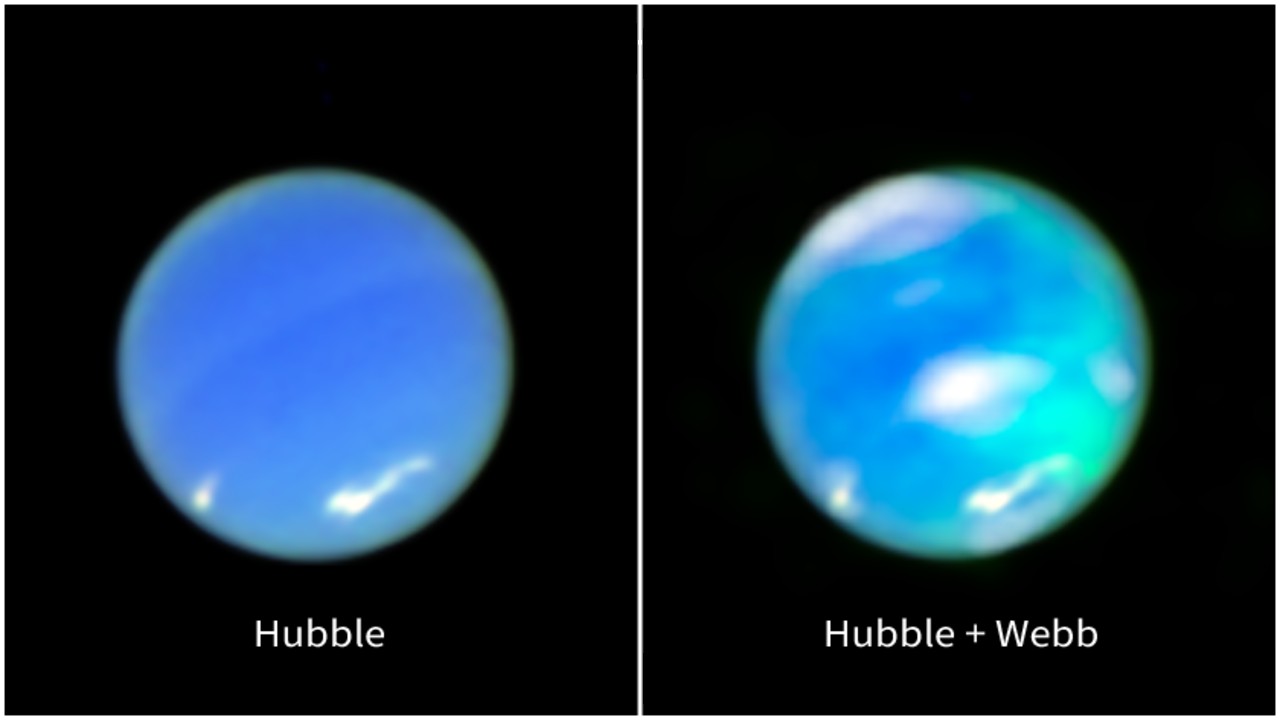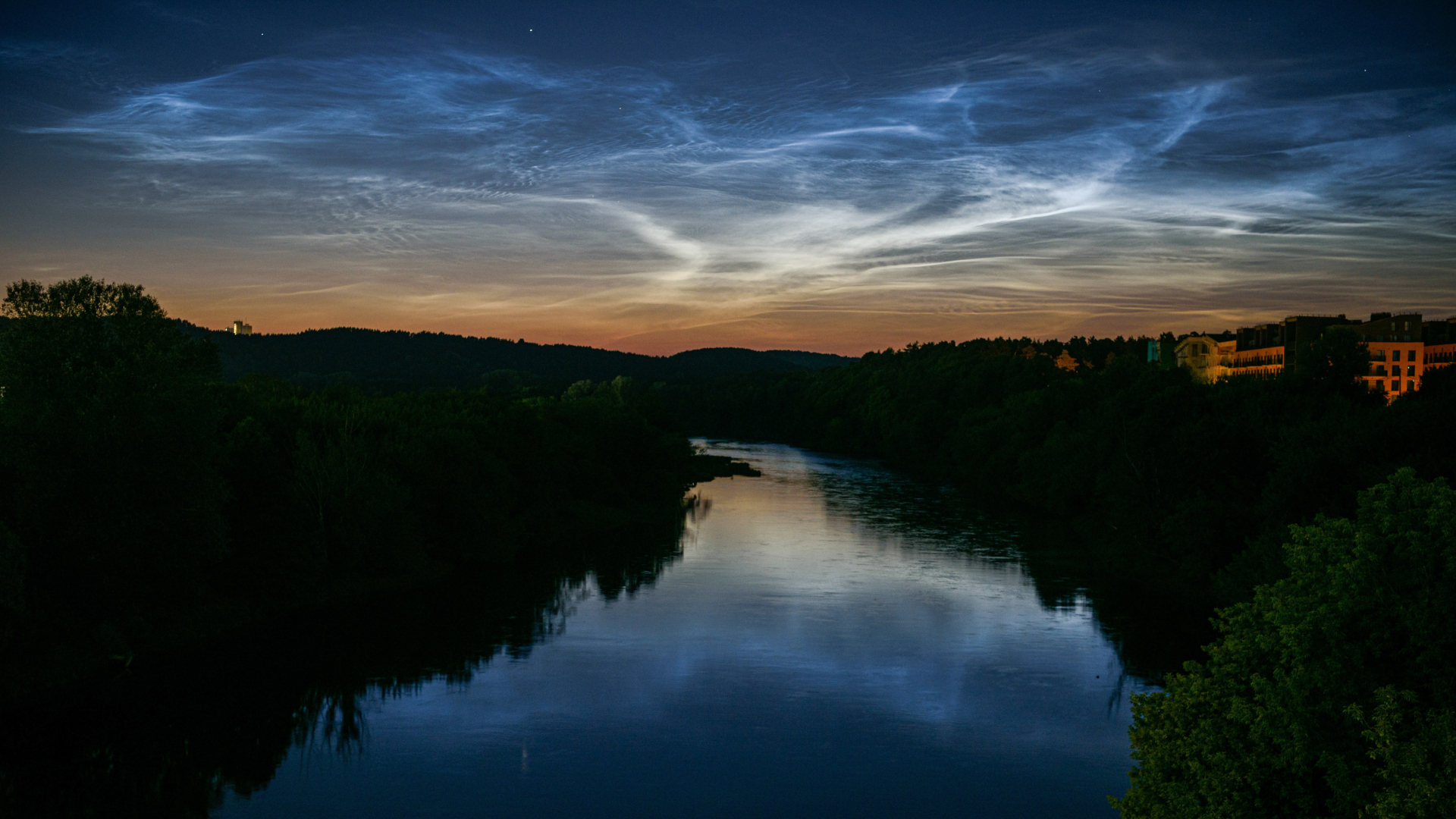1st images of elusive auroras on Neptune revealed by James Webb Space Telescope
"It was so stunning to not just see the auroras, but the detail and clarity of the signature really shocked me."

For the first time, astronomers have captured direct images of Neptune's elusive auroras.
Scientists have long suspected that the distant ice giant hosts shimmering light displays, based on fleeting hints from the Voyager 2 probe's flyby and observations of similar activity on Jupiter, Saturn and Uranus. Capturing images of Neptune's auroras had remained out of reach until the James Webb Space Telescope (JWST or Webb) turned its powerful eye towards the icy planet.
"Turns out, actually imaging the auroral activity on Neptune was only possible with Webb's near-infrared sensitivity," said Henrik Melin of Northumbria University, who conducted the research while at the University of Leicester, in a statement accompanying the photos. "It was so stunning to not just see the auroras, but the detail and clarity of the signature really shocked me."
Even more significant is the unique nature of Neptune's aurora, which scientists say differs from those seen on Earth, Jupiter, and Saturn, where auroras are typically confined to the poles. This is because their magnetic fields are relatively well aligned with their rotation axes, guiding charged particles from the solar wind toward the polar regions.
Neptune, on the other hand, has a highly tilted and offset magnetic field, which means its auroras appear at unexpected locations, such as the planet's mid latitudes.
These observations were made possible by the James Webb Space Telescope's Near-Infrared Spectrograph (NIRSpec), an instrument that analyzes the light absorbed or emitted by celestial objects. By breaking down the different wavelenghts of this light, scientists can determine key physical properties, such as temperature, mass and chemical composition.
In this case, NIRSpec captured detailed images of Neptune's ionosphere — the electrically charged layer of its upper atmosphere, similar to Earth's ionosphere, where auroras form. Excitingly, Webb's data revealed emissions of trihydrogen cation (H₃⁺), one of the most abundant ions in the universe. This discovery is significant because H₃⁺ plays a crucial role in planetary auroras, glowing in response to interactions between planets' atmospheres and charged particles from the solar wind.
Get the Space.com Newsletter
Breaking space news, the latest updates on rocket launches, skywatching events and more!
"H3+ has a been a clear signifier on all the gas giants — Jupiter, Saturn, and Uranus — of auroral activity, and we expected to see the same on Neptune as we investigated the planet over the years with the best ground-based facilities available," explained JWST scientist Heidi Hammel. "Only with a machine-like Webb have we finally gotten that confirmation."
The team was also able to take a temperature reading of Neptune, something that hasn't been done since Voyager 2's flyby in August, 1989. "I was astonished [by the results]," Melin said. "Neptune's upper atmosphere has cooled by several hundreds of degrees [in that time]. In fact, the temperature in 2023 was just over half of that in 1989."
The dip in planetary temperature may help explain why the aurora have been so difficult to view. This is because auroras occur when charged particles excite atmospheric gases, causing them to emit light. Higher temperatures generally mean more energetic particles and a higher rate of collisions, leading to brighter auroras. A substantially colder temperature would reduce the density of energetic ions, leading to weaker emissions that are harder to detect.
Astronomers will continue to study Neptune using the JWST, hoping to gain a deeper understanding of our solar system's strangest planet.
"As we look ahead and dream of future missions to Uranus and Neptune, we now know how important it will be to have instruments tuned to the wavelengths of infrared light to continue to study the auroras," added Leigh Fletcher of Leicester University, co-author on the paper. "This observatory has finally opened the window onto this last, previously hidden ionosphere of the giant planets."
Join our Space Forums to keep talking space on the latest missions, night sky and more! And if you have a news tip, correction or comment, let us know at: community@space.com.

A chemist turned science writer, Victoria Corless completed her Ph.D. in organic synthesis at the University of Toronto and, ever the cliché, realized lab work was not something she wanted to do for the rest of her days. After dabbling in science writing and a brief stint as a medical writer, Victoria joined Wiley’s Advanced Science News where she works as an editor and writer. On the side, she freelances for various outlets, including Research2Reality and Chemistry World.
You must confirm your public display name before commenting
Please logout and then login again, you will then be prompted to enter your display name.
